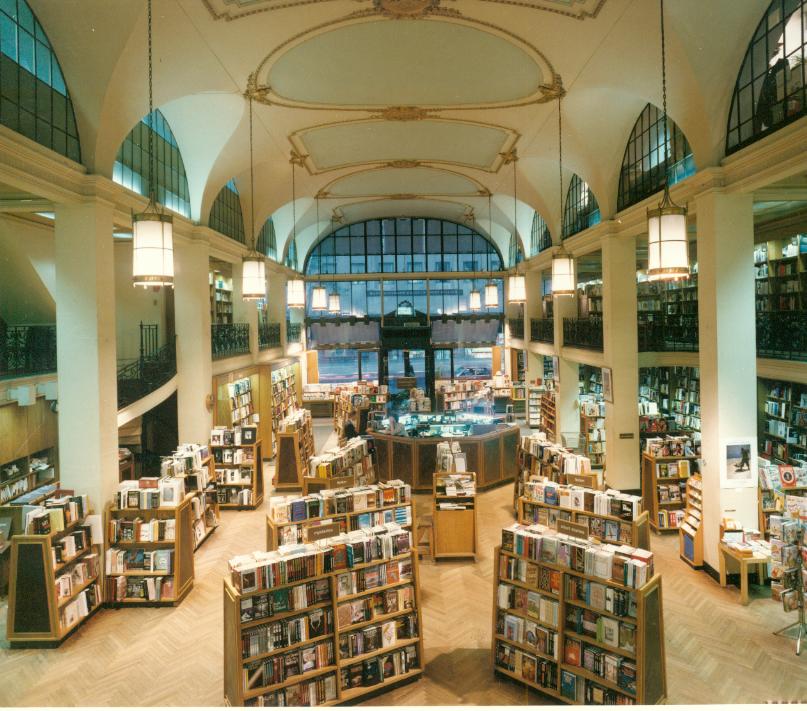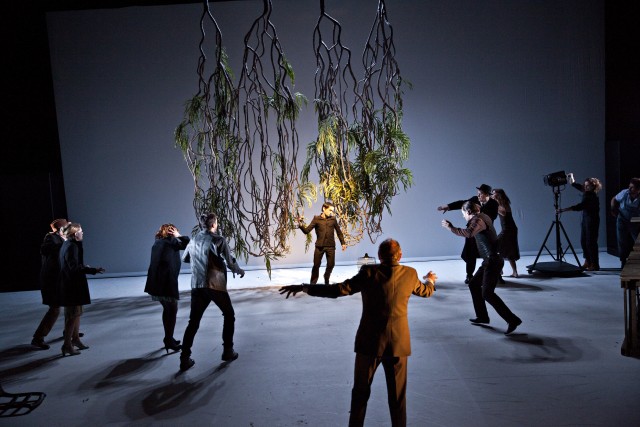
“There exists in this era, for thoughts written in stone, a privilege absolutely comparable to our current freedom of the press. It is the freedom of architecture.”
-Victor Hugo, Notre Dame de Paris
Some people say that the cathedral is built large so that we can feel the great distance between God and us. Some people say that the cathedral is built so beautifully to show the political power of the Catholic church. Some people say many things in front of the cathedral, watching the edifice in fear, like the way the Romans would mutter their quibbles at profanum, lurking around the boundary between what they hope to be sacred and what they hope to be vulgar.
Cathedral tells a story. It is not built magnificent to drive away people who, as Socrates would put it, speak as they do in the marketplace. Back in the time when not everyone had the privilege to learn, cathedral was a great building which told stories to the illiterates. It is an experiment ground on which many things can happen; the very first of all civil rights movements and one of the greatest petitions for freedom.
The beauty of all cathedrals that broke the boundary between the vulgar and sacred, common and noble, rich and poor, is also seen in the story of St. Patrick. Although he was once captured and enslaved in Ireland, he chose to come back to the so-called barbarians. He did not force the people into belief through violence; he took the shamrock, which was a sacred plant to the people who lived there, and explained the concept of Trinity.
 St. Patrick’s Cathedral, in that sense, is exemplary. It was a shelter for the Catholics in New York. Its foundation is the same as that of America: freedom, equality, coexistence, harmony, and all traits thought to be admirable and American. The true art of St. Patrick’s Cathedral is not from the aesthetics, but from the value and motive, which still lives today.
St. Patrick’s Cathedral, in that sense, is exemplary. It was a shelter for the Catholics in New York. Its foundation is the same as that of America: freedom, equality, coexistence, harmony, and all traits thought to be admirable and American. The true art of St. Patrick’s Cathedral is not from the aesthetics, but from the value and motive, which still lives today.
Taking a look at the Cathedral’s architecture, the building has a neo-Gothic style structure. The Cathedral started it’s construction in 1858, but didn’t finish building until 1878, which was in part due to the Civil War. Today, the church is open to public visits daily, except when mass is being held. It is located on 5th avenue, between 50th and 51st street at the heart of Midtown Manhattan.
We really believe that a visit to St. Patrick’s is worth anyone’s time. Currently it is under a massive 5-year renovation project, but it is still open. If you ever take a stroll through midtown and have the time, do go visit.
~Christopher Chong, Justin Roach, Lucius Seo










 “Becoming Robot” is an exhibit located at The Asia Society in the Upper East Side. Our group decided to go see it because Lucius actually has heard of the artist, Nam June Paik.
“Becoming Robot” is an exhibit located at The Asia Society in the Upper East Side. Our group decided to go see it because Lucius actually has heard of the artist, Nam June Paik.

 With regards to Just Kids, Hotel Chelsea was the site where Patti Smith had heard that had cheap rooms and that they can pay in art temporarily ahead of time (Smith 93). Inevitably, they got the smallest room in Hotel Chelsea, room 1017, as described by Smith (94-95). At Hotel Chelsea, Patti and Robert met many different people. The first person Robert met was Bruce Rudow, who took him under his wings. Others included hotel manager Stanley Bard, Sandy Daley, of who was describe as “the most influential person we met” (101), Matthew Reich etc. The Hotel Chelsea was a place of art and intellectual hub during this era, where famous people such as Bob Dylan, Janis Joplin, Jimi Hendrix had stayed. A lot happened there.
With regards to Just Kids, Hotel Chelsea was the site where Patti Smith had heard that had cheap rooms and that they can pay in art temporarily ahead of time (Smith 93). Inevitably, they got the smallest room in Hotel Chelsea, room 1017, as described by Smith (94-95). At Hotel Chelsea, Patti and Robert met many different people. The first person Robert met was Bruce Rudow, who took him under his wings. Others included hotel manager Stanley Bard, Sandy Daley, of who was describe as “the most influential person we met” (101), Matthew Reich etc. The Hotel Chelsea was a place of art and intellectual hub during this era, where famous people such as Bob Dylan, Janis Joplin, Jimi Hendrix had stayed. A lot happened there.
 an expensive Buddha. The job was referred from Janet Hamill, a friend she met from college. Smith described her job as a “dream job, working in the retail store of the prestigious publisher, home to writers like Hemingway and Fitzgerald, and their editor, the great Maxwell Perkins.” (Smith 55). Smith also felt very lucky to be working at “such a historic bookstore”, with a higher salary and being able to work with Janet (Smith 55). The bookstore announced its closure in 1988, and officially closed in 1989, ending the 76 years of business. Today, it is currently a Sephora cosmetics store, with the name of the building, “Charles Scribner’s Sons”, still written on the building itself.
an expensive Buddha. The job was referred from Janet Hamill, a friend she met from college. Smith described her job as a “dream job, working in the retail store of the prestigious publisher, home to writers like Hemingway and Fitzgerald, and their editor, the great Maxwell Perkins.” (Smith 55). Smith also felt very lucky to be working at “such a historic bookstore”, with a higher salary and being able to work with Janet (Smith 55). The bookstore announced its closure in 1988, and officially closed in 1989, ending the 76 years of business. Today, it is currently a Sephora cosmetics store, with the name of the building, “Charles Scribner’s Sons”, still written on the building itself.

 St. Patrick’s Cathedral, in that sense, is exemplary. It was a shelter for the Catholics in New York. Its foundation is the same as that of America: freedom, equality, coexistence, harmony, and all traits thought to be admirable and American. The true art of St. Patrick’s Cathedral is not from the aesthetics, but from the value and motive, which still lives today.
St. Patrick’s Cathedral, in that sense, is exemplary. It was a shelter for the Catholics in New York. Its foundation is the same as that of America: freedom, equality, coexistence, harmony, and all traits thought to be admirable and American. The true art of St. Patrick’s Cathedral is not from the aesthetics, but from the value and motive, which still lives today.

 Carnegie Hall is known for its prestigious nature in the classical music and performance world. I’ve never actually been there before, but as a pianist, I know that it is a place where all musicians strive to be and play one day.
Carnegie Hall is known for its prestigious nature in the classical music and performance world. I’ve never actually been there before, but as a pianist, I know that it is a place where all musicians strive to be and play one day. Professor Drabik asked us if we hated her.
Professor Drabik asked us if we hated her.


 It’s kind of intriguing to see how the World Trade Center has such an effect on people in the last half of the century. From the time construction started in 1968, to its opening in 1973, to its tragic incident in 2001, and even extending to now in 2014, and to the future, World Trade Center is and will always be a symbolic representation of New York. This thought really hit me while I was on the E train today, one that was bound for none other than World Trade Center.
It’s kind of intriguing to see how the World Trade Center has such an effect on people in the last half of the century. From the time construction started in 1968, to its opening in 1973, to its tragic incident in 2001, and even extending to now in 2014, and to the future, World Trade Center is and will always be a symbolic representation of New York. This thought really hit me while I was on the E train today, one that was bound for none other than World Trade Center.





